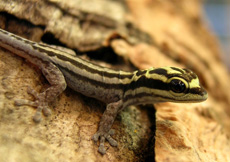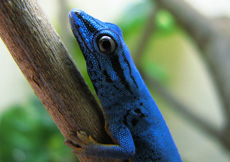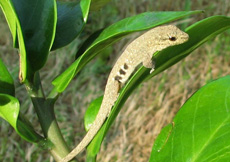The Genus Lygodactylus
In 1864 GRAY established the genus Lygodactylus containing approximately 60 species along with 34 sub-species. The genus name is derived from the Greek word lygos, a term for the very pliable twigs of chaste tree (Vitex agnus-castus) and daktylos, which means 'fingers'. According to translation, it is therefore geckos with flexible fingers. The main habitats of the species Lygodactylus is the tropical and subtropical areas of Africa and Madagascar. However two species occur in South America, whether or not they are really members of the genus Lygodactylus, remains to be determined. Lygodactylus are generally small geckos, their total length does not exceed 8-9cm. Some members of the genus only reach 5cm in length. They all share a round pupil which characterizes them as diurnal lizards. Lygodactylus also have custody of fins not only at the toes, but also on the underside of the tail. Regenerated tails also regain these fins. Their tail fins help them to secure a better grip when climbing. Besides some mainly brown and gray members of the genus, there are also many with a colorful paint scheme. Some of the males also differ in color from the females.
A very safe distinctive feature in males is the pre-anal pores on enlarged scales which are arranged in a chevron shape between the posterior thighs. In some members the sexes can also be distinguished on the basis of additional throat coloration, such is the case for example with Lygodactylus kimhowelli and Lygodactylus picturatus. In these members the throat is contrasted much stronger. The geckos of the genus Lygodactylus are heliothermic and remain within the natural habitat on tree trunks, rocks or walls. Almost all Lygodactylus live arboreal. Very few species such as Lygodatylus gravis inhabit the soil.




